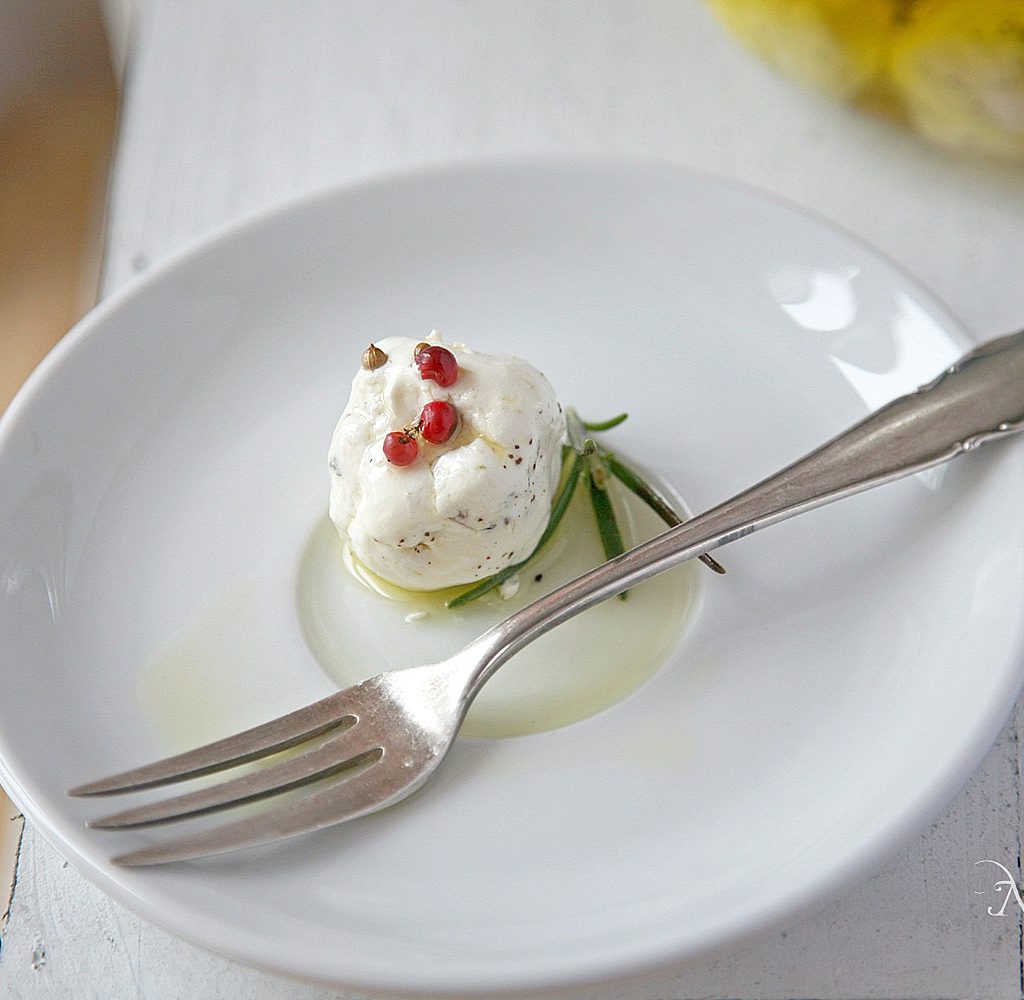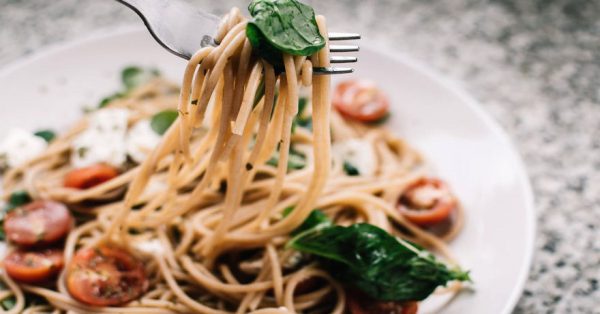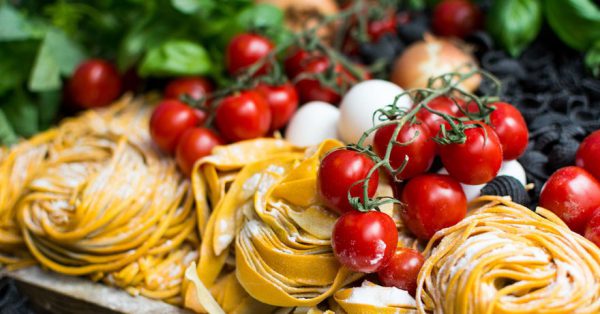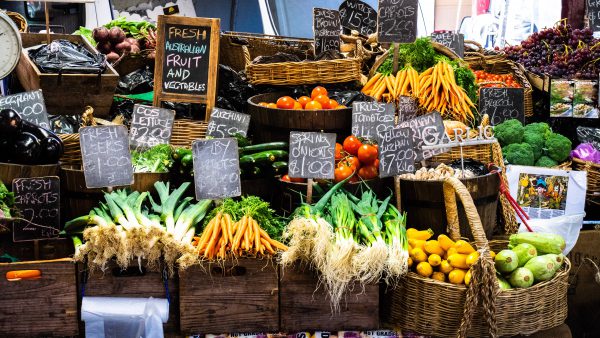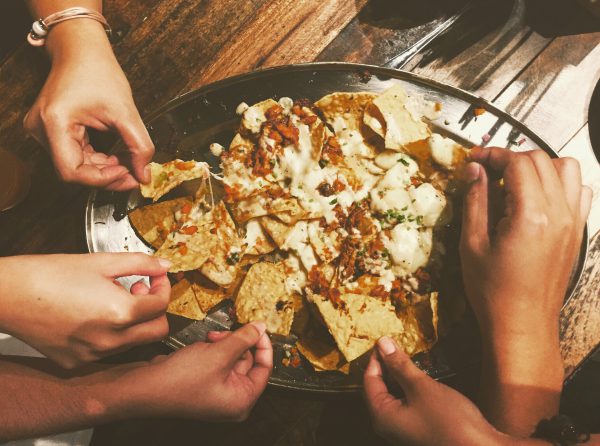Last Updated on February 05, 2023
‘Lebanon is a small mountainous Mediterranean country. Yet it’s a major commercial and cultural crossroad since the Phoenician era, 300 BC. Lebanese cuisine will get you in a heated debate over the origins of the dishes. Is it Israeli? Syrian? Turkish, or maybe Moroccan?
The thing is, the country has seen its fair share of foreign rulers, from Egypt and Persia to Rome and the Ottoman Empire. It even was a French colony during the early 1900s. All these influences have shaped Lebanese cuisine, making it a multicultural gastronomical star.
Lebanese chefs blend all these influences with fresh produce, whole grains, lots of nuts, exotic aromatics, and spices. If you’re familiar with falafel, hummus, or even baba ganoush, join us as we dive into these superstar dishes and more.
Every Lebanese Meal Starts With a Mezze
An essential element of Lebanese gastronomy is the social. The cuisine features all kinds of hot and cold appetizers or starters, locally known as mezze.
Kibbehs, fatayers, and warenabs are different types of mezze, and they often accompany main courses, such as tabbouleh and maghmoor. When you are in this beautiful country, thinking about what to eat, you will notice the word mezze (mezza, or meze) appearing on most restaurant menus.
Just like the Spanish tapas, the Ethiopian injera, or the Italian antipasti, the Lebanese are used to having meze both with homemade dishes and restaurant courses. The main ingredients in these appetizers are hummus, fried and pureed veggies, salads, olives, cheese, and bread.
Here are the most famous Lebanese mezzes.
Manoushe

Manoushe or “Arabic pizza” might as well be classified as a type of pastry rather than a meze. But regardless of where it lies in the pyramid of course hierarchy, we think it’s a type of bread that deserves more attention from the rest of the world.
The crispy crust of manoushe is covered with the za’atar spice mix that gives the bread a quite strong flavor. And even though the bread looks a bit flat, the inside is soft and slightly chewy.
When you go to a restaurant, you’ll have manoushe served as mezze, so don’t hesitate to dip it into some of the other appetizer platters. However, manoushe is quite satisfying on its own, so it’s common to pick one up from a street vendor for a simple breakfast on the go.
Hummus
Hummus is a divine spreadable cream eaten across Lebanon and the neighboring countries like Israel, Palestine, Jordan, and Syria, but you’re probably familiar with hummus as its popularity has already exceeded the region.
Still, it’s a must-try dish when you’re in Lebanon — naturally, with the fresh pita bread that they serve it with. If you’re lucky, you can also find hummus dishes with a twist – with some split peas or beets or aromatic Lebanese spices.
Tabbouleh
Tabbouleh, or tabouli, means “seasoned salad” in Arabic. Like hummus, it’s quite popular in Levantine cuisines — though each of them prepares it with their own dressing.
In Lebanon, it’s typically made of bulgur, tomatoes, onions, cucumber, and finely chopped herbs like parsley, mint, chives, and lemon. The result is a highly fresh salad that can easily become your favorite salad to side with any meal on a hot summer day.
Warak Enab
One of the most popular Lebanese starters is warak enab or grape leaves stuffed with rice. When the stuffing is rice and vegetables, it’s called bi-zeit. And when it consists of meat, the name is bi-lahm.
Does the concept sound familiar to you? The dish is quite popular around the Mediterranean and Levantine countries, where the Ottoman influence had been prominent for some time. So don’t be surprised when you see very similar dishes in Greece, Turkey, Armenia, Iran, or Egypt. And give all of them a try since all these countries contribute to the recipes in their special ways.
Labneh
Labneh, one of the most famous Lebanese specialties, is a cream cheese made of sheep or goat’s milk. Its texture is so light that you can easily confuse it with fresh yogurt. But it definitely is not.
Thanks to the goat’s or sheep’s milk, labneh already has a prominent cheese flavor that’s bolder and tangier than your regular cream cheese. It’s usually seasoned with lemon, herbs, or spice mixes like za’atar, which elevate the creamy light cheese and add some complex aromas. It’s either rolled into small balls before serving or used as a spread for fresh pita bread.
Kibbeh
Kibbeh is considered the national dish of Lebanon. The name comes from an Arabic verb meaning to form a ball or circular shape — even though they are usually in the form of a football.
The dish is a unique blend of soaked bulgur, lamb meat, and seasonings that can be prepared raw, baked, or fried. It’s also possible to find vegetarian kibbeh made of potatoes, pumpkin, and tomatoes. These flagrantly seasoned starters are eaten as an appetizer on both casual meals and celebrations in Lebanon, usually served with mint leaves and drizzled with olive oil.
Baba Ganoush
Baba ganoush is a rich and healthy eggplant cream from the Middle East. In Lebanon, its other name is moutabal. Being a very popular vegetarian spread, moutabal is made of roasted eggplant, onions, tahini, and garlic. You can also find different variations made with lemon juice and natural yogurt. Get a piece of fresh pita bread, spread some baba ganoush, take a bite, and close your eyes while all the flavors and aromas conquer your tastebuds.
Muhammara
By David Crowe
Muhammara is another dish whose fame isn’t limited by borders. It’s super popular in Lebanon as well as the rest of the Mideast. You’ll probably know why once you taste it.
Muhammara is a spread made of roasted red peppers, garlic, pomegranate molasses, fresh ground walnuts, and various warm spices. It’s slightly sweet, spicy, tart, and savory all at once and can make you go through a full pita bread, no matter how full you are.
Hearty and Fresh: Lebanese Dishes
Shish Taouk
Shish taouk means chicken skewers in Turkish, and the dish is exactly what its name suggests. Even though the name comes from Turkey, the Lebanese version of the dish is different than the Turkish one or any other one you might have around the world. In Lebanon, the chicken meat is marinated in lemon and slowly grilled.
You can have shish taouk as a street food wrapped in a tortilla-like bread or as a portioned meal at a restaurant. It’s juicy, bold with flavor, and simply addictive for anyone who likes chicken kabobs.
Sayadieh
By villamamas
If you like Spanish paella or Portuguese arroz de marisco, Lebanese cuisine has a surprise for you. The word sayadieh roughly translates to catch, referring to the fisherman’s catch of the day. It’s a dish based on fish and rice, accompanied by caramelized vegetables and warm spices like cinnamon, caraway, cumin, and coriander.
Traditionally, Lebanese cooks keep the fish in sayadieh as a whole, with the head and bones, which turns into a rich stock after long hours of simmering and used to cook the rice. Before serving, the dish is garnished with toasted pine nuts and slivered almonds. All these make sayadieh a rich and bold yet harmonious fish and rice dish.
Shawarma
Shawarma is a sort of kabob — and one of the world-famous street foods, especially in Middle Eastern countries.
To make shawarma, the cooks use marinated meat – beef, lamb, or chicken – simmered on a vertical rotisserie, just like the Turkish doner. When it’s time, the meat is shaved off and placed in pita bread with fresh garnitures such as lettuce, tomatoes, turnips, and pickles and served as a sandwich.
It can also be made with falafels, which makes a delectable vegetarian dish. Shawarma sandwiches or wraps are traditionally served with tahini, garlic sauce, or hummus. They are already a bit spicy, but if you ask for extra toum, you might get the title of honorary Lebanese.
Kofta
A dish that has spread throughout the Ottoman Empire, you can find kofta on skewers or as minced meatballs almost everywhere in the Middle East, the Balkans, and South Caucasians. You’ll find them in tagines in Morocco, on skewers in Turkey, and in Ikea in Sweden.
However, in Lebanon, kofta is cooked in a creamy garlic, lemon, and tahini sauce that’s boiled down to a thick consistency, giving the dish a glaze. The dish can include vegetables like potatoes, tomatoes, peppers, or onions, depending on where you eat it, and it’s usually served with Lebanese pilaf rice or pita bread with some fresh salad.
Falafel
Falafel is a basic commodity in Lebanon, however, its fame crossed the country’s borders a long time ago, turning into a staple food for almost every vegetarian and vegan around the world. Even though the delicious chickpea patties can be found anywhere around the globe, you should definitely pay tribute to them when you’re visiting their place of origin.
Riz a Djej
Riz a djej, or rice and chicken, is a classic Lebanese dish packed with buttery flavor and scents from aromatic spices. It’s also a filler that’ll make you feel like you’re being taken care of. The aromatic combination of chicken, rice, vegetables, and spices is top-notch. The dish is also topped with various nuts to give it an even more creamy flavor and some crunchy texture that perfectly complements the softened chicken and smooshy pilaf rice.
Samke Harra
By Asad asad12
Just like warek ebab, samke harra is a stuffed dish. But this time, it’s not vegetables or leaves that are being stuffed, instead, it’s a whole fish — or sometimes fish filets.
To make samke harra, the chef’s choice of fish is baked or lightly fried and stuffed with a mixture of aromatics, including garlic, cilantro, chili peppers, and walnuts. The final and significant touch is the tahini sauce that’s poured over the stuffed fish. And, as simple as that, you have a harmony of unusual flavors on one plate.
Sweet With a Touch of Flowers: Desserts
Ma’amoul
By mobetalay
Ma’amoul is an ancient shortbread cookie. They are believed to have originated in ancient Egypt, but today ma’amoul is traditionally made all around Lebanon to celebrate the arrival of Easter and to accompany Eid.
Ma’amoul means stuffed in Arabic. The cookies are made by pressing handmade shortbread cookies into a mold and then filling the hole with a nut or fruit paste made of walnuts, pistachios, almonds, or dates.
You can tell what’s in the cookies by their shapes: the oval ones are always stuffed with pistachio, the dome ones with almonds, and the round ones with a flat top are full of sweet date paste.
Znoud El Sit
Phyllo dough is almost a staple in Lebanese pastry. Here’s another one: znoud el sit. Fill lumps of phyllo dough with cream and deep fry the whole thing until it’s golden and crispy. Then dip the fried dough pieces in a sweet syrup flavored with orange blossom and rose water. The result is pieces of sweet phyllo cakes that are crispy on the outside, creamy on the inside, and sweet all around.
Znoud el sit roughly translates to the upper arms of a woman. Why? Do they have anything to do with the purse-shaped kaak bread? We’ll leave it as a mystery for you to solve when you’re visiting the country.
Baklava
Baklava is a delicious layered crisp phyllo dessert filled with ground nuts between the leaves. It’s one of the super popular oriental desserts that are made, loved, and claimed in most places in the Middle East.
Lebanese baklava, or baklawa, as opposed to Turkish or Greek, which are made of a honey-based syrup, uses a mixture of rose water and orange blossom, which makes it much lighter. The fresh aromas of the flowers make it a delicate dessert. But still, thanks to the generous amount of butter, Lebanese baklava can make you drool from several streets away.
Osmaliyeh
By zarreen
Osmalieh is another Middle Eastern specialty, also known as kenafah, made from fresh semolina covered around a special oozing cheese and bathed in butter and honey syrup.
The semolina cake can be either fried or baked. When cooked, the crispy golden semolina soaks up all the flavors from the sweet syrup and melted butter while still smoking hot.
It’s usually accompanied by cream or sometimes topped with ice cream. If not, getting something to drink with it to refresh your palate once in a couple of bites is a very good idea to savor this delicious dessert to the fullest.
Ghraybeh
By Hani Absi
Ghraybeh is a small shortbread cookie. Thanks to the clarified butter, the pure white cookies are extremely creamy and silky — so much so that they almost melt in your mouth. It’s a delicate and light recipe.
The cookies are topped with a single nut like walnut or pistachio for decoration, which gives you a change of palate when you reach the middle part. Even though ghraybeh cookies are traditionally prepared during Ramadan as a treat for the guests, you can find them in patisseries any time of the year.
Meghli
By Mona Usher
If you’ve started to think that all Lebanese desserts are very heavy with sweet syrups and melted butter, let us give you more context. Meghli is a spicy rice pudding that’s vegan and gluten-free and topped with assorted nuts.
Meghli is traditionally eaten to celebrate the birth of a newborn baby. The pudding takes up a brown color that looks like chocolate at first glance, but it’s actually from the caraway, star anise, and cinnamon sticks cooked in the pudding. The very same color is thought to symbolize the fertility of the soil. And the nuts on top symbolize the seeds, completing this ceremonial desert.
Jazarieh
By Anna
Jazar means carrot in Arabic, and the dessert is made with carrots in some other Middle Eastern countries. But if you like pumpkin pie, you’re in luck because Lebanese chefs make jazarieh strictly from pumpkins.
Lebanese cooks take pumpkin shreds and cook them in a sweet sugar syrup spiced up with cinnamon sticks and cloves. Then they brighten up the flavors with mastic gum and orange blossom water. To finish, the dessert is garnished with assorted nuts and coconut flakes.
Jazeriah is so popular in Lebanon you’ll run across a stall showcasing piled-up shiny orange pumpkin shreds around any city, regardless of where you are.
Over and Out!
Even if you’ve never visited Beirut, you must be familiar with at least a few of these dishes, like baklava, falafel, hummus, or baba ganoush. As you delve deeper into this spectacular multicultural cuisine at the heart of the Levant, you’ll love it more and more.
Lebanese cuisine definitely looks oriental with its vivid spices, scented herbs, and colorful presentations. But if you look closely, you’ll see other influences, such as Levantine, Mediterranean as well as Arabian cuisines. It’s another example of how mixed cultures can create gastronomical masterpieces just like Mexican and Colombian cuisines that lie on the other side of the world.







